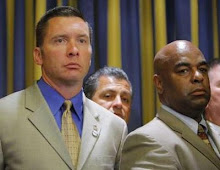
Yeah, I took a hiatus to tour the world, and work on some entrepreneur efforts...but you folks pulled me back in...Especially with the continued anti-black male agenda, being promulgated by the Homosexual Black Male Collective. From the Anti Morehouse College column in VIBE magazines mean girls of Morehouse (WTF) to Tyler Perry's need to resurrect Nztogate Shanges Colour Girls, after 35 years I thought we put this bullshit to rest!
















1 comment:
Its always the Upper Caste misleading the mainstream.. Shange was born Paulette L. Williams[ in Trenton, New Jersey to an upper-middle-class family. Her father, Paul T. Williams, was an Air Force surgeon, and her mother, Eloise Williams, was an educator and a psychiatric social worker. When she was 8, Shange's family moved to the racially segregated city of St. Louis. As a result of the Brown v. Board of Education court decision, Shange was bused to a white school where she endured racism and racist attacks.
Shange's family had a strong interest in the arts and encouraged her artistic education. Among the guests at their home were Dizzy Gillespie, Miles Davis, Chuck Berry, and W. E. B. Du Bois.
When Shange was 13, she returned to New Jersey, where she completed high school. In 1966 Shange enrolled at Barnard College. She graduated cum laude in American Studies, then earned a master's degree in the same field from the University of Southern California in Los Angeles. However, Shange's college years were not all pleasant. She married during her first year in college, but the marriage did not last long. Depressed over her separation and with a strong sense of bitterness and alienation, Shange attempted suicide.[citation needed]
In 1971, having come to terms with her depression and alienation, Shange changed her name. Ntozake means she who comes with her own things (literally things that belong to her in Xhosa) and shange means she who walks with lions (meaning the lion's Pride in Zulu).[5]
In 1975, Shange moved to New York City, where in that year her first and most well-known play was produced—For Colored Girls Who Have Considered Suicide When the Rainbow is Enuf.
Post a Comment